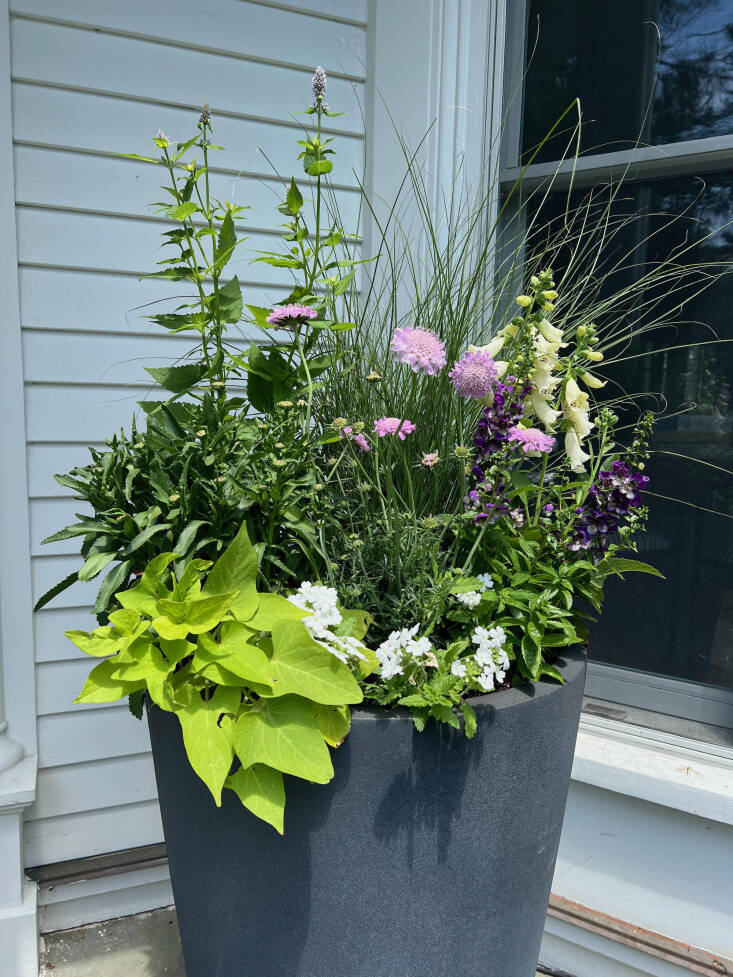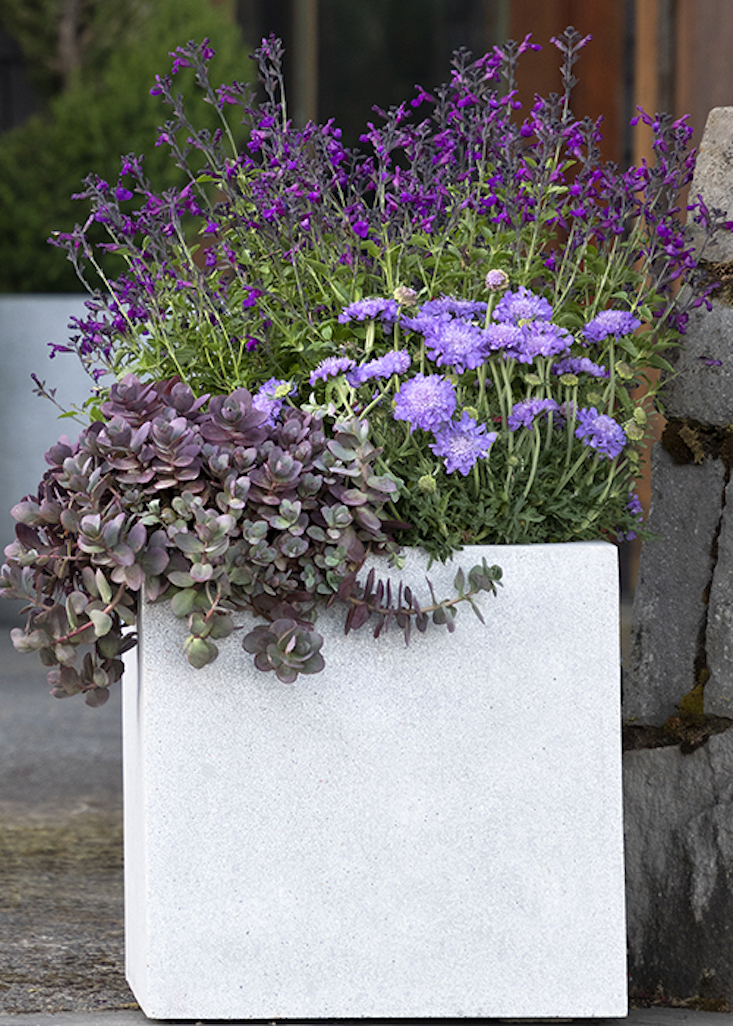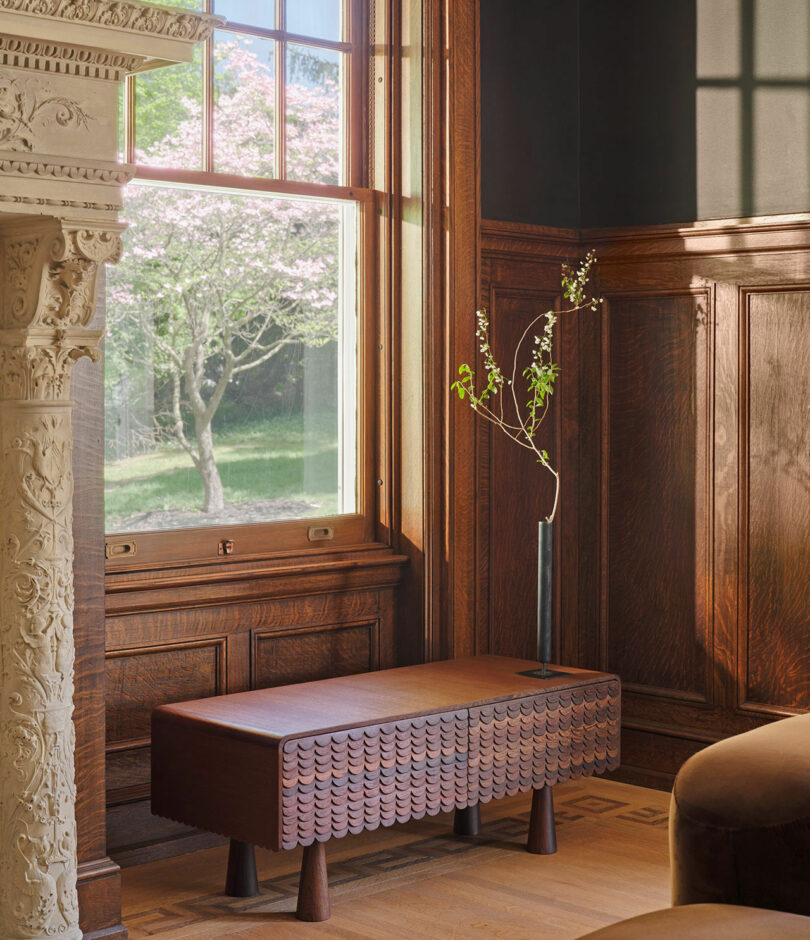There are two main reasons that you might consider planting a pollinator garden in pots instead of in the ground: Either you don’t have a garden bed—or you’ve run out of space to plant anything more in your garden. In either scenario, a container garden can support pollinators just as well as an in-ground garden. Even if you aren’t dealing with space constraints, you might consider adding some pollinator pots, says Alicia Whitaker, a master gardener and a co-leader for the Suffolk Alliance for Pollinators’s South Fork chapter. “If they’re near an outdoor seating area, the gardener can see and enjoy the wildlife that will be attracted.” Plus, she notes: Containers are also a great option if the gardener has a mobility issue or other handicap that makes gardening in the ground difficult.

Here, nine tips on how to garden for pollinators in pots:
1. Be prepared to water often.
The most common mistake with any container garden is underwatering. “The soil in pots dries out faster, especially in a very sunny and hot environment, such as a windy deck or brick patio surface,” says Whitaker, who notes that people often underestimate the water needs of container plants because they are accustomed to worrying about overwatering indoor houseplants.
2. Go big.

Garden pros recommend choosing the largest container possible. “A higher volume of soil will dry out less quickly,” explains Whitaker. But there’s another reason to go big: The more plants you cram into a pot, the better the chances the pollinators will find them. “When we use large pots or gang pots together in groups, we create some floral targets for pollinators,” says ecological horticulturist Kim Eierman, the author of The Pollinator Victory Garden and founder of EcoBeneficial. “That’s really important. Having a larger target makes it much easier for the pollinator to find the resource.” If you’re worried about weight, you can use a false bottom planter.
3. Amend the soil.
Both Whitaker and Eierman suggest mixing compost into the container’s soil, to nourish the plants and encourage root growth. “I apply a limited amount of compost a couple times a year to beef up the soil biology because there’s no interchange with any other soil,” adds Eierman. “I just put it on top and let rain do its thing.” Whitaker adds, “We often hear that native perennials prefer leaner soil and don’t require fertilizer, but the artificial environment of a container calls for better soil and the regular use of organic fertilizer.”
4. Consistency + variety is key.
Just like humans, pollinators need a diverse diet, but that doesn’t mean you need to run out and buy dozens of different plants. Eierman says to aim for a balance between diversity and sufficiency of given plants. So, rather than having many tiny plants of a wide variety of species, focus on a few types. “It’s better to have a more substantial amount of that one species,” says Eierman. Whitaker adds, “Think drifts, not polka dots.” When pollinators forage they’re looking for that one plant species, so a repetition of bloom from container to container can attract them without having one massive target, Eierman notes.
5. Give the bugs color cues.

“We know that pollinators have their color preferences,” says Whitaker. Hummingbirds are attracted to red flowers, while many bees love purples and yellows. Butterflies are drawn to a wide range of colors, but moths are attracted to white blossoms. “it’s good to have a variety of colors, and a variety of shapes,” says Whitaker, noting, “There are almost no wrong choices.”




